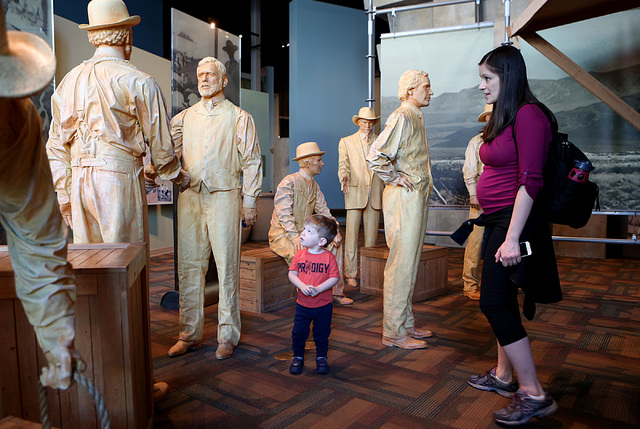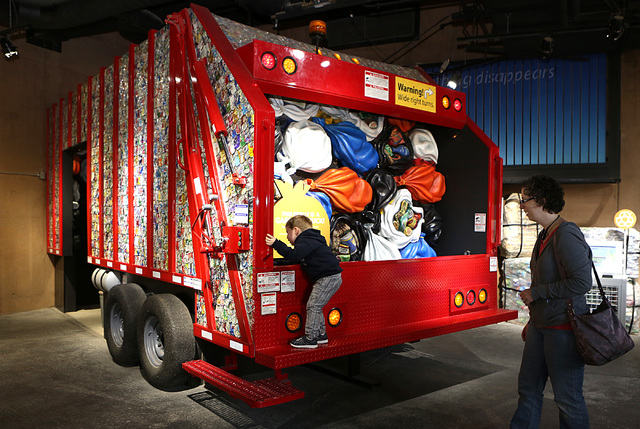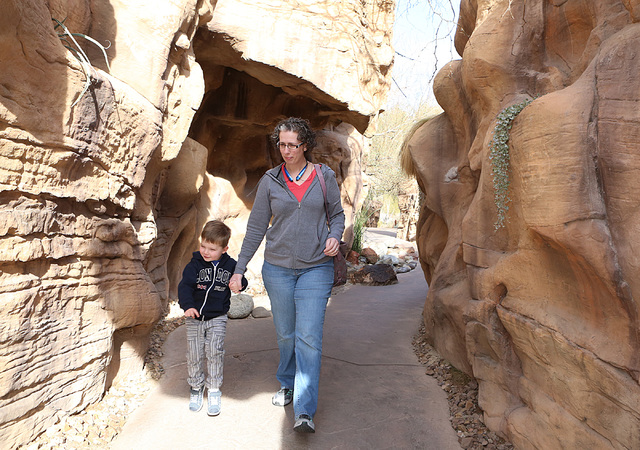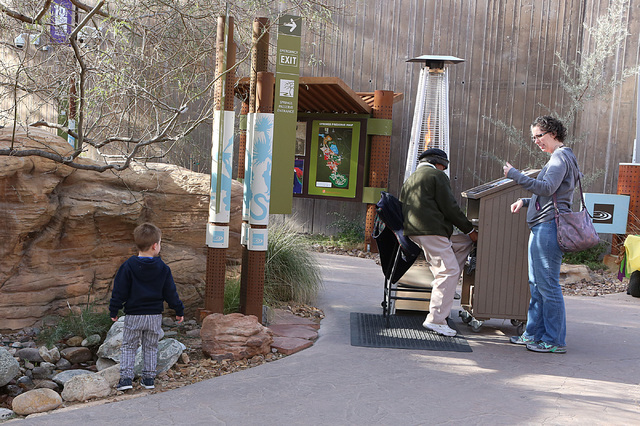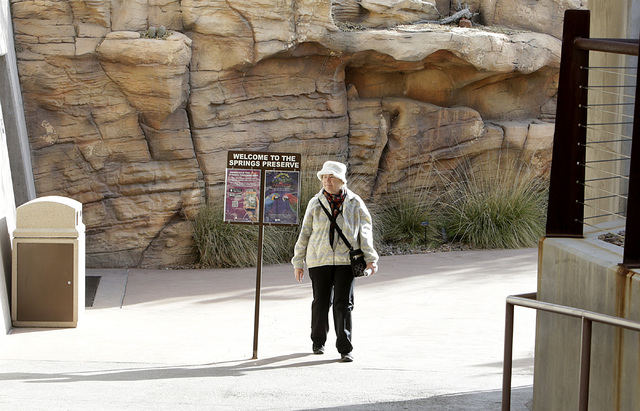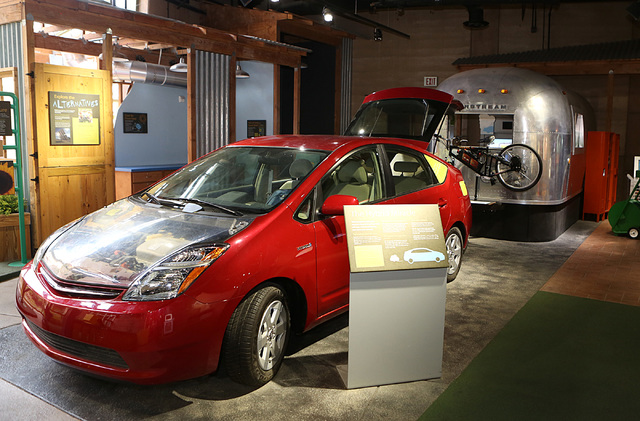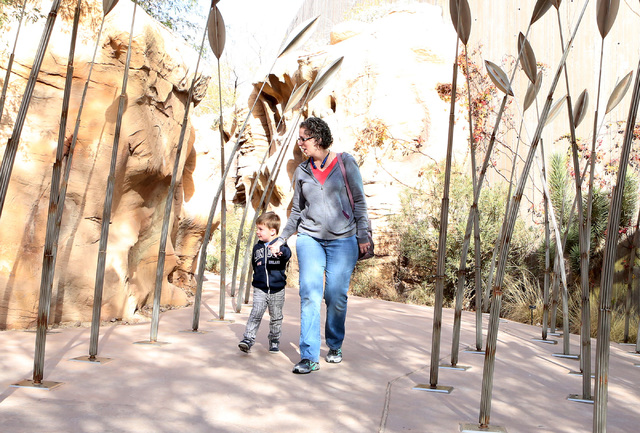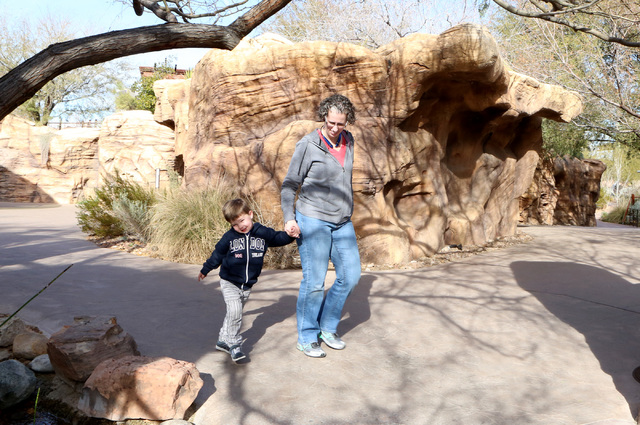Now in its 10th year, Springs Preserve drawing more visitors, adding exhibits
As it prepares to mark its 10th anniversary this year, the Springs Preserve is on track to welcome more visitors and soak up less money from water ratepayers than ever before.
The $235 million central valley attraction still needed almost $4.7 million in operational subsidies from the Las Vegas Valley Water District over the past fiscal year, but that’s down from the more than $10.5 million the utility poured into the preserve in its first full year of operation.
Almost 260,000 people visited the 180-acre collection of conservation-themed exhibits, green buildings and desert plants on Valley View Boulevard and U.S. Highway 95 during the fiscal year that ended July 1. That is an increase of more than 100,000 over its first-year attendance.
All told, the preserve has attracted more than 2 million visitors since it opened on June 8, 2007.
“I think it’s really caught on with the community,” said former water district general manager Pat Mulroy, who came up with the idea for the attraction. “It’s becoming exactly what we hoped, which is a community gathering place.”
What haven’t materialized are the crowds of tourists Mulroy and others predicted when they originally floated the concept. Back then, projections called for the facility to attract about 600,000 visitors, most of them tourists, in the first year alone. Instead, fewer than 160,000 people showed up, only a few thousand of them from out of town.
This year, the Springs Preserve is slated to open several new exhibits, starting this weekend with an interactive replica of early Las Vegas called Boomtown 1905. (You can read all about it in the Neon section of Friday’s Review-Journal.)
That will be followed in the coming months by WaterWorks, a display paid for with private donations and designed to explain the valley’s water distribution system from inside an actual working pump station on the property.
Also this year, the preserve hopes to debut its new and improved playground for kids and finish work on a series of ponds that will eventually harbor endangered Pahrump poolfish and relict leopard frog.
The water district built its monument to conservation around the original springs that attracted the valley’s first human inhabitants and later provided water for the dusty rail stop that would become the entertainment capital of the world.
So far, water customers have subsidized the enterprise to the tune of $58 million, not including the money spent to build the attraction in the first place. The district is still paying down almost $140 million in construction debt on the project, and those payments are slated to continue until 2036.
“It’s exactly the sort of thing a government agency shouldn’t be getting involved in,” said Michael Schaus from the Nevada Policy Research Institute, a conservative think tank. “There’s no reason a water authority should be trying to build an attraction.”
But Peter Barton, administrator for the Nevada Division of Museums and History, sees the preserve as a valuable community resource built on a site of great cultural and historic significance. It also has provided a shot in the arm to the Nevada State Museum in Las Vegas, which opened on the property in October 2011. Barton said the move from nearby Lorenzi Park has boosted attendance and roughly doubled the size of the museum.
“We’re seeing steady growth,” he said. “I’m pleased with the direction it’s going.”
Mulroy said she never really expected the Springs Preserve to break even. As far as she’s concerned, the annual subsidies are an investment in the water district’s larger conservation campaign.
Preserve manager Bruno Bowles said administrators and staff have worked hard over the years to cut costs and boost revenues, and they aren’t finished yet.
“Our goal is to continue to push lower,” Bowles said. “I think zero is a stretch.”
Contact Henry Brean at hbrean@reviewjournal.com or 702-383-0350. Follow @RefriedBrean on Twitter.



